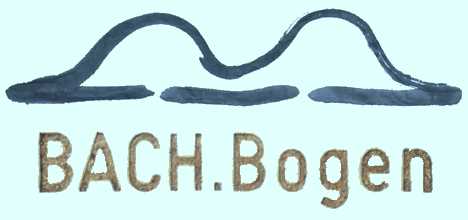Janos Starker and Michael Bach in Conversation
December 11, 2000
Conservatoire de Musique de Genève, Grande Salle
Janos Starker: Ja, you can play chords. How do you hold the bow?
Michael Bach: Well, I have different kinds of bows, so, this is one of it, and I hold it like that.
JS: Oh –
MB: Yep. (plays the beginning of 3 Pitches, 21 Sounds )
JS: (interrupts) OK, you can play three strings together. How does it work with the Suites, with the Sarabandes?
MB: Yes, as I said, I have different kinds of bows –
JS: So, you can write the kind of music for the cello which, before you, couldn’t be realized?
MB: Exactly. So, this is another kind of bow.
JS: (to the audience) So, for all the people who are here I will declare: I open my mind! (laughter)
MB: You have an open mind –
JS: I open it, I open it … (laughter)
(MB plays the first part of the Sarabande in C major)
JS: Now –
MB: Well –
JS: Because the fact is, that we are using something which reminds us the way may have been played at the time, right? On the other hand we are playing on an instrument which is high pitched, and so on.
MB: I am sure you can do that, but I never did it. As I said, this kind of bows –
JS: But the primary purpose is not that …
MB: No …
JS: The primary purpose is to allow the kind of music to be written which use multiple strings …
MB: Yes.
JS: Well, –
MB: Would you like to try it?
JS: I don’t know how to hold it yet, (laughter) but –
MB: Well …
JS. This is where the thumb has to go in? It’s enough to make your hair stand on end –
(JS plays the beginning of the Sarabande in G major.)
JS: But I don’t promise that I am going to spend the next year practising it (laughter). –
…
JS: The ideal thing, if you think, what’s going to happen to this invention of yours –
MB: Ja-
JS: What I am trying right now, I am trying to find out the commercial value of the thing!
MB: Well, (laughing) that’s typical American! (laughter)
JS: Artistically, I am –
MB: No, it’s idealistic …
JS: (dramatic pause, then applauds ironically, audience applauds too, laughter)
MB: … at the moment (laughter).
JS: When people invent something I would like to be seen –
MB: Well, there are some new pieces for it by John Cage, for example, by Dieter Schnebel, a German composer, or Hans Zender wrote a new cello concerto for this bow –
JS: That’s what I mean, so, which means that –
*) Michael Bach Bachtischa, 3 Pitches, 21 Sounds for Cello (1997)
composed for Mstislav Rostropovitch’s 70th birthday

